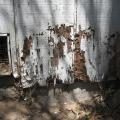How To Find Value In Vacant Homes
Investing in real estate is like any other investment. Of course, risks are associated, but those willing to research and develop a strategic plan can minimize those risks, and the rewards can be maximized.
And like any investment, finding deals to buy low and knowing when to sell high is a big piece of the puzzle in making those real estate holdings profitable.
The nation's vacant homes present both an opportunity and a problem.
The Problem Of Vacant Homes
On the one hand, they offer a potential solution to the growing need for more affordable housing in many cities.
With rising construction costs and interest rates, vacant homes can be quickly renovated and put back on the market at lower prices than new builds.
This could alleviate some of the pressure of rising rents that put low-income families at risk of losing their homes.
On the other hand, there often needs to be a better match between where these vacant homes are located and where they are most needed.
Many of them may be situated in luxurious areas such as New Orleans, Los Angeles, or New England.
At the same time, those in other areas like Appalachia may be run-down and in no shape for rehabilitation.
In addition, there is also the issue of who owns these properties – many may be owned by wealthy individuals who have no intention of making them available for affordable housing.
This means that even if these properties were to become available, it would still be challenging to access them due to their location or condition.
Why Vacant Homes?
Vacant properties can be an excellent opportunity for investors looking to make short- or long-term profits.
These properties are often sold at a discounted rate due to their lack of upkeep and maintenance, making them attractive investments for those willing to put in the work.
Vacant properties can also be used as rental units, providing an additional source of income.
Additionally, vacant properties may have the potential for development or renovation, which could result in even greater returns on investment.
Investing in vacant property requires research and diligence.
Learning how to find vacant properties that motivated owners would be willing to sell below market price is a process of reaching out regularly, providing a benefit to the seller like a cash offer, and being top-of-mind when they consider selling.
One caveat, before investing, it is essential to understand the local market and laws regarding the vacant property. Using those data points, you can then determine the cap value of the property.
Cap value is a formula that determines the profitability of a property based on expenses and operating costs versus the amount of money you could make on resale or rent.
Finally, it is essential to have a plan in place for how you will manage the property once purchased. Investing in vacant property can be profitable with proper research and planning.
How Much Can A Flipper Make?
In real estate investing, there are numerous ways to make a profit. For example, you can buy and hold to make money after the home appreciates. In addition, you can choose to make the property a rental, or you can choose to flip the house.
Flipping homes is a process that includes finding a vacant or distressed property at below market price, putting some money into making renovations and upgrades, and selling it above your original purchase price (plus costs).
If you’re wondering how much do house flippers make, it can vary based on a few factors.
- Purchase price
- How much debt was required to purchase
- Cost of material and labor for renovations
- Neighborhood adjusted value
- Resale asking price
- Market trends
Being a home flipper can be lucrative if you understand the market trends, the neighborhood-adjusted value (where the average price of the homes nearby impacts the overall asking price for resale), and how much overhead costs you had to put into the house before flipping.
In general, vacant homes provide a vast opportunity for an investor willing to put in the time to research the market and find an owner ready to sell. The value is in finding a distressed or vacant home, buying it at a discount, and finding a way either short term flipping or long-term holding to maximize your return.
More to Read:
Previous Posts:








